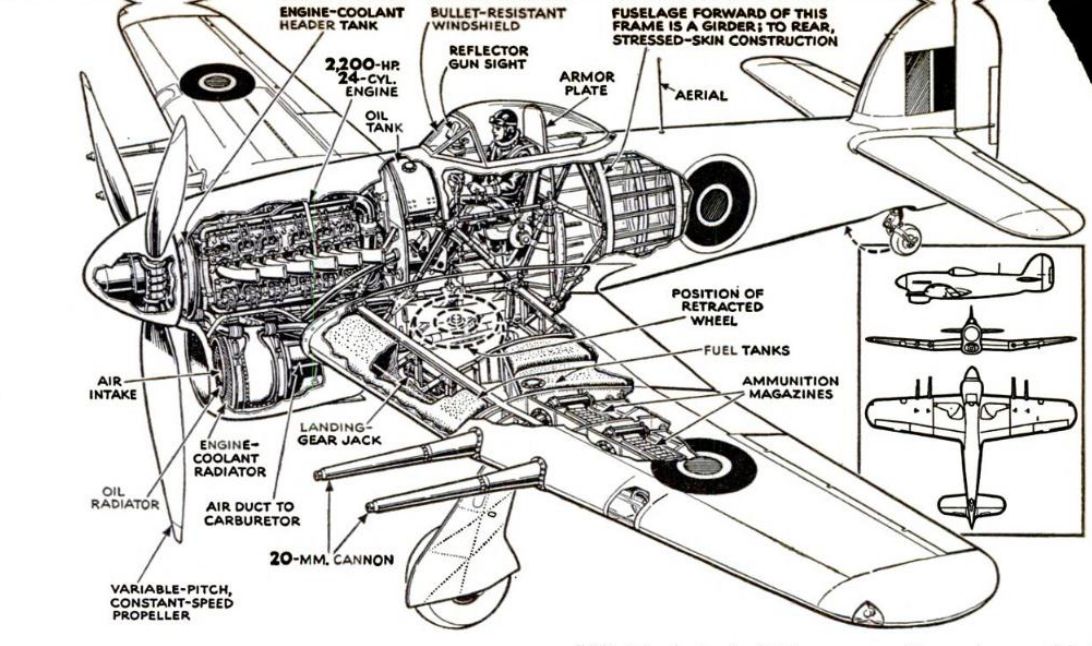
The RAF’s Typhoon was termed an “Engine With Wings” by Popular Science because of its 2,200 horsepower, 24 cylinder power plant–a massive engine at the time.
The Typhoon carried four 20 mm cannon. With its capacity for carrying two 500 lb. bombs, one under each wing, the Typhoon could be a fighter-bomber as well as a fighter only.
At a loaded weight of 11,300 lbs., it was fairly heavy compared to its sister, the Hurricane, which weighed in at 7,290 lbs. loaded.
This cutaway is from Popular Science, August 1944